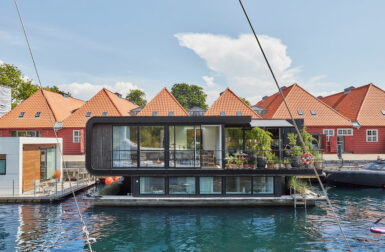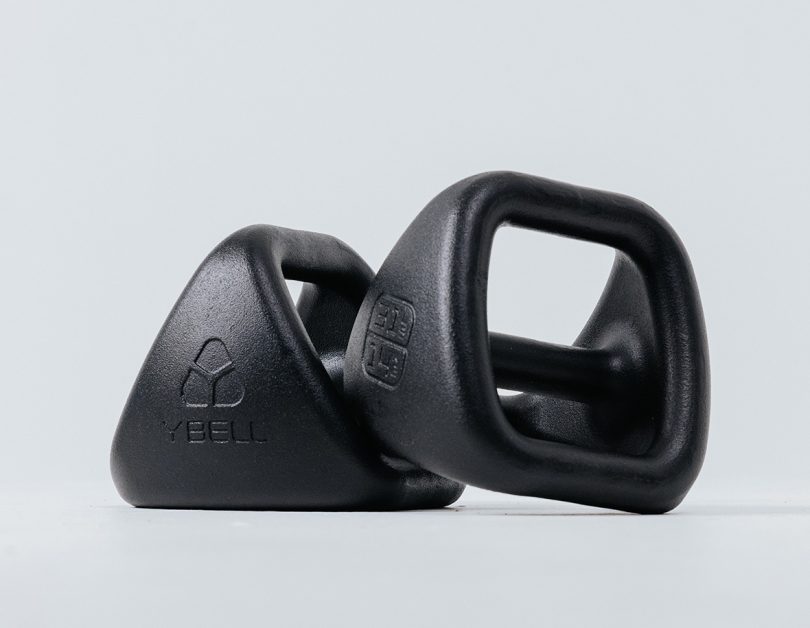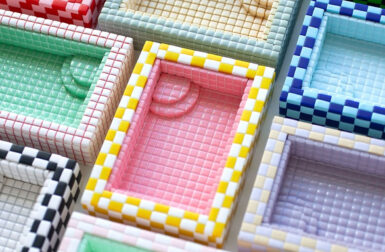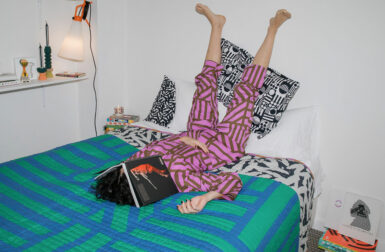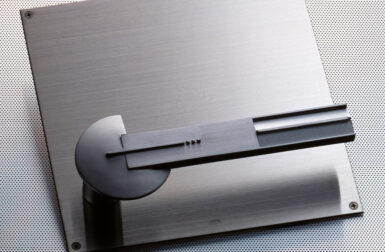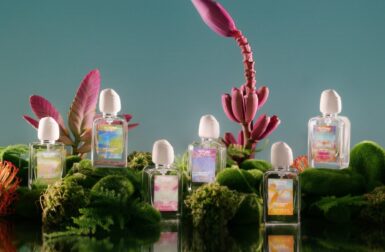Take 5: A Flatpack PC Case, Earphones Molded For You and Only You, Versatile YBells and More
Every other week we’re inviting one of the Design Milk team to share five personal favorites – an opportunity for each of us to reveal the sort of designs we use and appreciate in our own lives from a more personal perspective. Tech Editor Gregory Han returns this week for our Take 5 series.
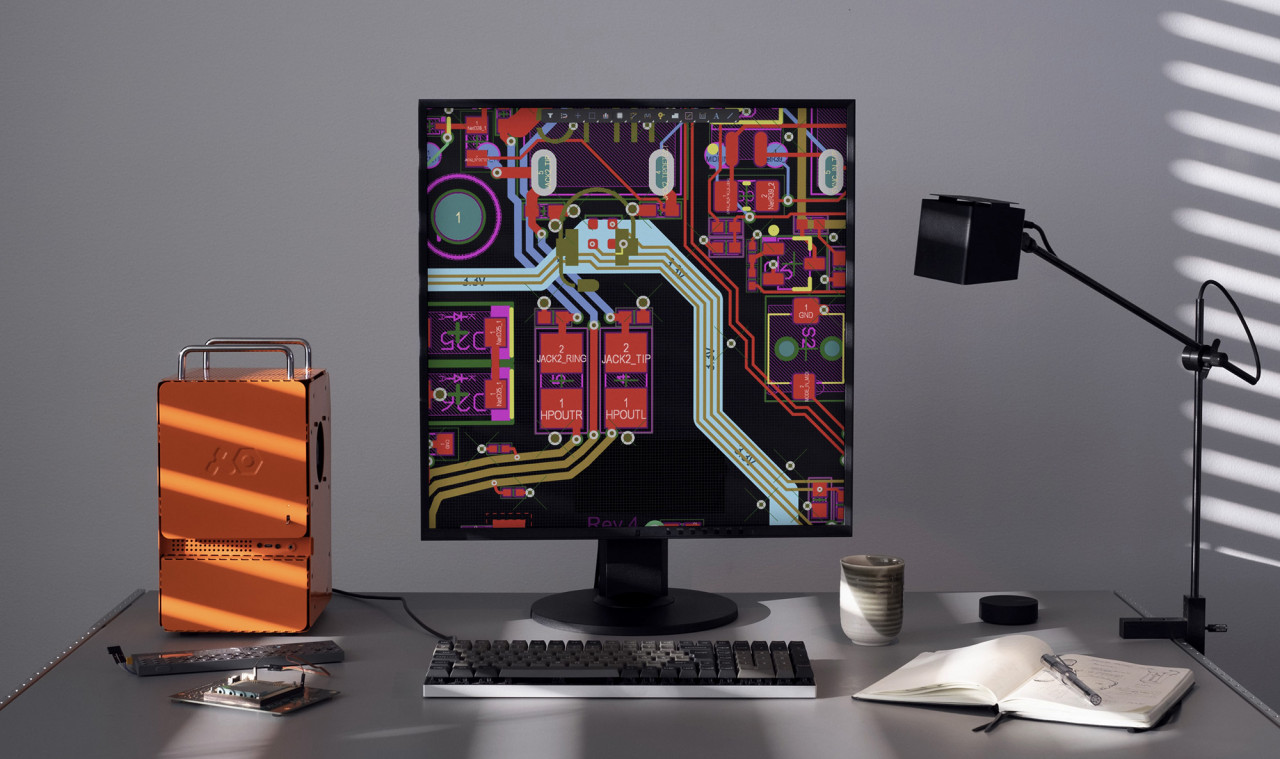
1. It’s often (and incorrectly) assumed everyone working within the creative sector relies upon Apple computers. In fact many designers across numerous fields of design – especially architects, industrial designers, automotive designers, and anyone relying on GPU reliant tasks – tend to be deeply invested in utilizing Windows-powered machines. My own PC interests admittedly skew more toward the recreational realm of gaming, where building one’s own gaming rig invites numerous customizations. Currently on my radar is the Computer-1 by Teenage Engineering, a mini-ITX PC chassis with a tech-utilitarian and flat-pack design; aligning with the ethos of custom PC culture, it’s a build it yourself affair. Beyond the impressive flat-pack construction, what stands out most is the Computer-1’s eye-catching, 1mm aluminum boxy handled profile. Paired with a very bright orange powder coated finish, it’s a rig that looks straight out of the game Death Stranding.
2. I’d be the first to admit $1,500 premium in-ear monitors are a niche product. But if you’re an audio professional, musician, or a very particular audiophile willing to part with that princely sum, Campfire Audio Supermoon planar magnetic driver earphones might tickle your cochlea curious. The exorbitant price tag justifies itself with a unique 3D-printed build and hand-finished assembly in Portland, Oregon. To minimize the amount of moving parts, Campfire Audio 3D-printed each unit as a single component, improving the IEM’s longterm wear-and-tear reliability and performance accuracy. Also, unlike the “one-size-fits-all” experience of most earbuds or IEMs, you’ll be asked to send in an ear impression to be digitally scanned so each unit can be custom-fit to match every subtle and unique curve of the wearer’s ear. When you say “there are my Supermoons,” you won’t be exaggerating.
3. I keep a small collection of house plants in my home office to counteract the fact I work from a fairly dark north-facing bottom floor room surrounded by way too much tech gear. The greenery not only perks up my own spirits, but also improves my video call backdrop. I’ve recently replanted a houseplant into a Northern Oasis self-watering terracotta planter, a leafy housemate that previously suffered by being either under or overwatered in the past. It’s now on the rebound because this container has taken out the guesswork. I just need to refill it once a week but pouring a fill through the nifty and convenient spout receptacle, something even my goldfish memory can handle.
4. Are they kettlebells or dumbbells? The YBell Pro Series work like both and are currently my absolute favorite new piece of fitness equipment because of the variety of compound movements you can practice with them. The triangular design isn’t for looks, it’s an ergonomic feature allowing for a variety of confident grips across a wide range of movement; you can use them like a dumbbell for curls and presses, or swing them like kettlebells, singularly or in pairs. And indicative of the fitness industry finally recognizing home equipment has to live within a domestic space, I’d venture to say YBells make my clunky set of adjustable and traditional dumbbells look kinda…well…dumb.
5. Because I believe books are worthy of twice the attention, I’m proposing a two-for-one recommendation this go around. The first, The Touch sneaks in as a decor porn tome with twenty-five examples of serene sophistication. But where authors Nathan Williams of Kinfolk and Jonas Bjerre-Poulsen of Norm Architects diverge from other coffee table tomes is using the 288-pages of the book to underline how great architecture consciously engages a wider gamut of sensory engagement beyond what we see – the amorphous emotions shaped by the sum of our senses we often attribute to “great atmosphere.” Reading this book is the architectural equivalent of listening to a movie director’s audio commentary and BTS featurette: you’ll leave with a greater appreciation of previously overlooked details.
You Can Go Anywhere published by the Josef and Anni Albers Foundation is a bit more singular on the surface – a beautiful boxed tome commemorating the 50th anniversary and global efforts of the foundation established by artist Josef Albers and textile artist and printmaker Anni Albers in 1971. But in reality the book is no less holistic in its scope than the aforementioned title, this one about the influence and responsibility of art, architecture, and design in the greater context of the world. Filled with essays from the likes of Japanese architect Toshiko Mori and fashion designer Paul Smith, the Albers name invites many notable voices and stories, but the pages I most lingered upon were those dedicated to the humanitarian efforts being made in Senegal by the foundation where the Albers’ work is framed as a legacy to learn from rather than operating as mere precious preservation.
This post contains affiliate links, so if you make a purchase from an affiliate link, we earn a commission. Thanks for supporting Design Milk!

